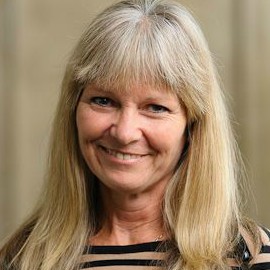
I’ve warned many a patient off crash dieting, including those diets based on formula foods. To me, such diets represented everything that was wrong about the dieting industry – promoting quick fix solutions over long-term sustainable behaviour change.
So, I was pretty sceptical when colleagues at Oxford University asked me to take part in a trial testing a formula-food approach to weight loss in general practice. Could such a diet, or, as I now know it, ‘total diet replacement’ programme, really lead to sustained weight loss?
Despite that scepticism, I was open to the idea. Like many practices, we usually refer patients to attend 12 weeks of a weight loss group with a practice nurse, ‘on prescription’. Although this has worked well for some, we really only see modest weight losses and that isn’t enough to make a change for people suffering with multimorbidity or change the risk profile of someone on several medications for obesity-related disease.
Patients I referred to the trial programme went off to see a local commercial total diet replacement (TDR) counsellor who explained the approach. The TDR is so called because it is a nutritionally complete diet that can be used as a sole food source of nutrition for up to 12 weeks. The idea is that a total break from food gives a person the chance to eradicate their old routines and habits.
Many of my patients have found it surprisingly easy in practice, and I encourage people to give it a go
Meanwhile, the TDR soups, shakes, and bars products provide roughly 800 kcal per day – a very low calorie intake. Needless to say, people who have ‘never had any success dieting’ saw the weight drop off. What followed was both reassuring to discover and, apparently, vital to the success of the programme. After eight weeks, with the help and guidance of their counsellor, people moved back to eating normal food, by gradually reducing the use of the TDR products.
Intriguingly, the research team asked me to stop most diabetes medicines and reduce blood pressure medication drastically in the patients I referred. It was amazing to see how quickly their blood pressure and blood sugar fell when they were taking hardly any food on board. Patients did have to be put back on some medication when they started eating again, but not all of it. Now, two years on, some patients are still on reduced medications.
Does it work? Well the results of the clinical trial speak for themselves. The TDR group were on average 10.7kg lighter after one year, while people we referred to programmes run by practice nurses – like our excellent nurse – were 3.1kg lighter, a difference of over one stone. The TDR group experienced greater improvements in blood sugar too.
In my practice, 21 patients were assigned to the TDR programme and 19 to the support from our practice nurse. I was astonished to find out that, on average, after one year the TDR group had lost around 10kg more than those who received usual care. One study participant who sticks in my mind, who lost over three stone (around 20kg), has actually maintained the lower weight for some time now and says ‘my life has changed completely’.
Since the trial, I now sometimes suggest to patients that they should consider TDR programmes. Admittedly, it’s not for everybody, and patients are often dubious about the approach, asking: ‘Can I really survive on this kind of food?’ But many of my patients have found it surprisingly easy in practice, and I encourage people to give it a go.
On the down side, TDR programmes are not generally available through the NHS so patients have to do this privately right now, which I find uncomfortable. It can cost around £50 a week, and while that does cover the counselling and all the formula food products, it will obviously exclude some people we might want to consider referring.
Dr Christine A’Court is a GP partner in Oxfordshire
Pulse October survey
Take our July 2025 survey to potentially win £1.000 worth of tokens













